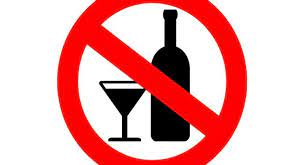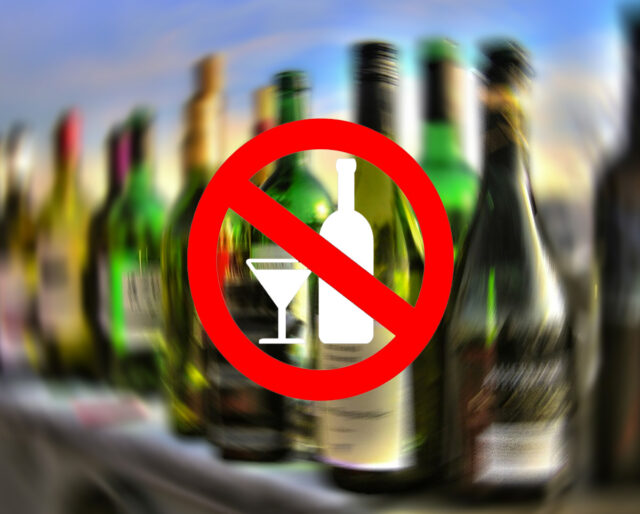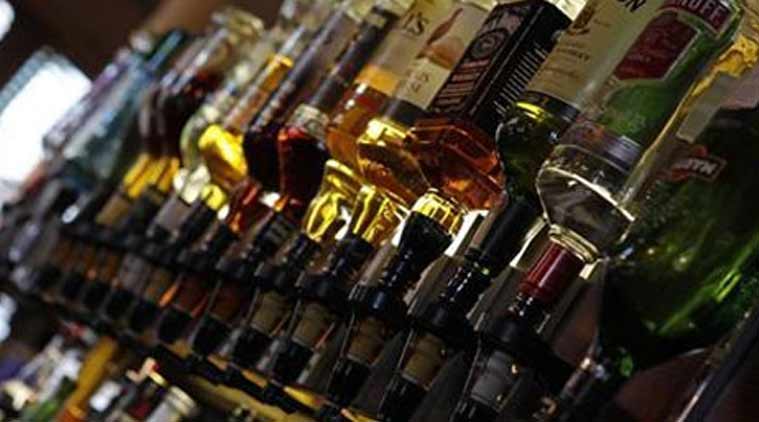Why do some Indian states ban alcohol? What are its effects?

Why is alcohol illegal in some Indian states? What results does it have?
As the number of fatalities from the most recent hooch tragedy in “dry” Bihar increases, we examine prohibition’s effects.
38 people have officially died as a result of the most recent hooch tragedy in “dry” Bihar. The state’s prohibition policy, according to critics, is one of the causes of the tragedy because it encourages the production and sale of fake alcohol in a thriving black market.
Alcohol prohibition has a long history in India, where it is both one of the fundamental Gandhian principles and one of the Directive Principles of State Policy.
Alcohol makes a man forget himself and also, while its effects last, renders him completely incapable of performing any useful tasks, according to Gandhi. Those who start drinking ruin both themselves and their communities. We examine the effects of prohibition in India.
How is alcohol viewed in the Indian Constitution?
One of the current Directive Principles of State Policy (DPSP) states that “the State shall endeavour to mainly bring about the prohibition of the consumption of intoxicating beverages and of drugs which are harmful to health, except for medicinal purposes.”
Although DPSPs are not by themselves legally enforceable, they do set objectives that the state should strive for in order to create the conditions necessary for citizens to live happy, fulfilling lives. As a result, the Constitution and, consequently the Indian state view alcohol as a bad thing that needs to be controlled.
However, alcohol is a state subject, meaning that state legislatures have the right and obligation to create laws regarding it, including “the production, manufacture, and possession, transport, purchase, and sale of intoxicating liquors,” as stated in the Seventh Schedule of the Constitution. As a result, there are differences in alcohol-related laws from state to state that span the entire spectrum from prohibition to private sale.
Why doesn’t prohibition exist in every state?
Although the Constitution calls for the prohibition of alcohol, most states find it very challenging to enact such a law. This is also primarily due to the fact that alcohol-related revenues are difficult to ignore and have consistently provided a sizable portion of state government’s revenue.

For instance, state liquor revenues in Maharashtra fell from Rs 17,000 crore in March to Rs 11,000 crore in the month of April 2020 (during the nationwide Covid lockdown). Due in part to the industry’s contribution to tax revenues, the state government later classified liquor stores as an essential service and blamed them for a large portion of this decline. The Maharashtra government received Rs 11 crore in revenue from the sale of alcohol on the day that the liquor stores were reopened.
What are some of the locations where prohibition is still in effect?
There are laws governing the use and sale of alcohol in every state (like age requirements or dry days). Currently, total prohibition is in place in five states, and partial prohibition is in place in a few more.
Bihar
The Nitish Kumar administration, in keeping with a promise made to the women of Bihar prior to the Assembly elections held the year before, completely outlawed the sale and possession of alcohol back in 2016. Those found to have violated the ban were subject to harsh penalties, such as hefty fines and prison terms. The Bihar government amended its prohibition laws earlier this year, which reduces the punishment for first-time “drinkers” and allows them to get away with a fine rather than facing arrest. This was done to free up space in Bihar’s already crowded jails and direct government attention away from alcohol consumers and toward sellers and distributors.
Gujarat
Gujarat has practised prohibition ever since it became a state in 1960. Gujarat has practised prohibition for 62 years, during which time the Act has undergone a number of amendments. Notably, the death penalty for sellers and producers of fake alcohol that results in fatalities was instituted by the then-chief minister Narendra Modi in 2009. Gujarat, however, has regulations for both individuals and hospitality businesses to obtain special alcohol licences.
Lakshadweep
In consideration of the culture and beliefs of its primarily Muslim population, the Union Territory prohibits both the consumption and sale of alcohol. On the island of Bangram, there is a resort with a bar that is permitted to serve alcohol legally.
Mizoram
After the new administration reinstated the prohibition that had been repealed in 2015, Mizoram once more became a “dry state” in 2019. Mizoram had previously experienced prohibition for 18 years. Prohibition was one of the Mizo National Front (MNF) government’s top campaign pledges. An MNF minister declared during the announcement of the reinstatement of prohibition that “the loss of revenue is also much less than the loss of human life and suffering.” More important is a benefit to society at large. Alcohol consumption is restricted to military personnel and those with “medical needs”.

Nagaland
For the benefit of its citizens, Nagaland enacted total prohibition in 1989 for “moral and social” reasons. However, the Naga government has recently considered only partially lifting the prohibition for a number of reasons.
Some states that have partial prohibition include Karnataka, which specifically outlawed domestic arak in 2007, Maharashtra, where the production and sale of alcohol are prohibited in the districts of Wardha, Gadhricholi, and Manipur, where prohibition is in effect in the districts of Bishnupur, Imphal East, Imphal West, and Thoubal.
Oomen Chandy, who was Kerala’s chief minister at the time, declared in 2014 that the state would impose prohibition gradually. The state has since broken its promise, though.
Is prohibition effective?
There is proof that, in general, prohibition makes it possible for a thriving underground economy to distribute alcohol outside of the control of the state. This brings about its own issues, such as the development of organised crime organisations (or mafias) and the spread of fake alcohol.
While the government increased the difficulty of obtaining alcohol, it is not possible to completely eliminate its availability.
The poorer segments of society are also disproportionately affected by prohibition, while the upper classes can still buy expensive (and secure) alcohol. Even in Bihar, the majority of cases filed under the state’s prohibition laws involve those who are less privileged.

Prohibition may also offer a few small advantages, though. Studies have shown a connection between alcohol use and domestic abuse or violence. Prohibition has frequently been presented in India as a “women’s rights” issue. In Bihar, Nitish Kumar apparently based his decision on these factors. There is some evidence to support the idea that in this situation, prohibition has a positive effect.
According to a report by the Sexual Violence Research Initiative, crimes against women “have also clearly declined both in terms of rate (registered cases per 100,000 female population) and also incidence (absolute numbers)” since the introduction of prohibition in 2016. While there may be other factors at play, other studies have indicated that certain types of crime slightly decreased after prohibition.
Specifically, when one also looked at “alcohol and violence,” Emily Owens, an economist at the main University of California Irvine, claims that “prohibitions (in the US) were associated with main lower murder rates” and lower crime overall. According to her, “It (prohibition) affects family members, kids, and violence that takes place inside someone’s home.”
Homegrown alcohol brands, such as gin, beer, wine, and single malt, have grown in popularity over the past few years, especially among Indian consumers who have learned how to enjoy a drink at home. But the appeal extends beyond the region. These brands have started to compete successfully with established players on the global stage thanks to a clever combination of appealing packaging, affordable price points, and steadily increasing exports.
“Everyone on earth is three drinks behind. We wouldn’t have any problems if everyone in the world drank three drinks, as actor Humphrey Bogart famously said in 1950. This hypothesis has not yet been tested, so it may or may not offer hope for world peace. However, people are enjoying one drink—or three—at least in India.

India’s entire alcohol market is estimated to be worth $48 billion. According to the Confederation of Indian Alcoholic Beverage Companies, the distribution of cases (standardised to nine litres a case) is currently around 560 million cases with 323 million spirits, 228 million beers, and 2.8 million wines (CIABC). Homegrown alcohol brands have grown in popularity among Indian consumers over the past few years. These brands include those in the categories of gin, beer, wine, and single malt, to name a few.
Customers do not need to “revenge party,” in contrast to “revenge travel.” They learned how to enjoy a drink indoors during the lockdowns of the previous two years. In fact, according to Paul P. John, chairman of John Distilleries, which produces Paul John single malt whisky, alcohol consumption at home is still rising. He continues, “The luxury segment benefits from the decision to prioritise quality over quantity. In other words, consumers are choosing to spend more money on better alcohol.
Critics’ approval is the first step in consumer adoption, which is then followed by trade acceptance. Vinod Giri, director general of the CIABC, thinks that consumers have been able to “uptrade” due to increased income and greater awareness of alcohol. “Young consumers don’t notice any quality differences between imported and domestic goods. They are at ease with being Indian, so the product’s origin is incidental to them, he claims.
Edited by Prakriti Arora




